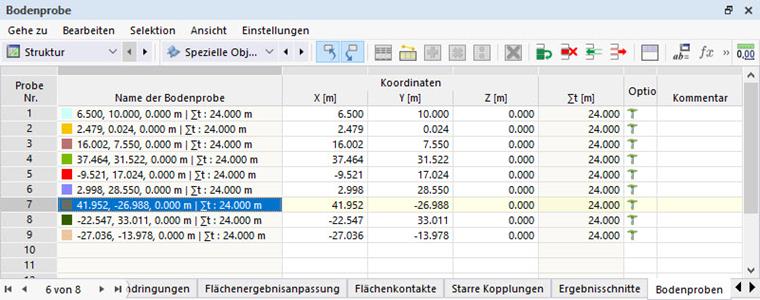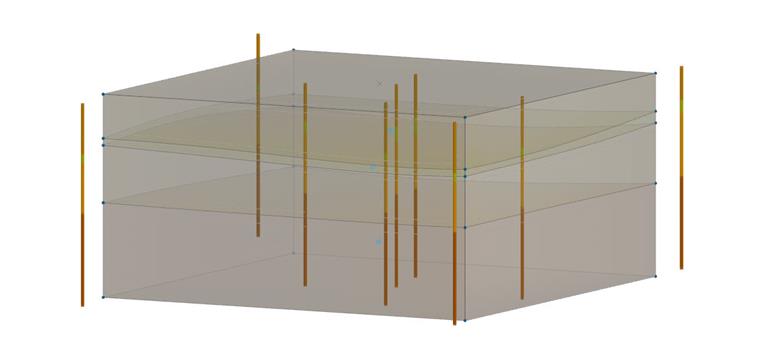Boreholes can be used to store information about the soil materials encountered and their extent over depth at a specific position on the terrain, the location of the boreholes. The aim is to enable the generation of the soil solid to be analyzed, known as soil massif, from the boreholes. The generation of boreholes is described in this section.
You can find the soil samples in the Navigator in the “Special Objects” folder and open the corresponding input dialog box from there. This dialog box is shown in the following image.
List
The list in the dialog box includes all boreholes generated in the current model. All other text boxes in the input dialog box contain entries for the borehole currently selected in the list.
The font color of the soil samples in the list contains the information according to the convention known from RFEM 6. Incorrectly defined objects appear in red font. If soil samples have not been used to generate a soil mass, they appear in blue font.
Name
By default, the name of the borehole is composed of the coordinates of the sample and the depth. However, it is also possible to assign user-defined names.
Coordinates
To describe the location of the respective borehole, the global coordinates for the upper edge of the borehole are entered. This can be done in the dialog box or alternatively in tables. Excel export and import are available for editing the coordinates in the tables.
Ground Water
You can define a groundwater level for the ordinate related to the borehole.
Soil Layers
It is necessary to specify soil layers in tables, starting from the top edge of the sample to the depth of the bottom edge of the sample. For this purpose, you can select a soil material from the materials that have already been defined in the model in the first column of the table, or switch to the input dialog box for materials to create a new soil material. Each row corresponds to one layer.
The thickness of the respective soil layer of the sample can be entered in the second column of the table for the thickness value.
Video
The following video briefly shows the procedure of creating boreholes in RFEM 6.



